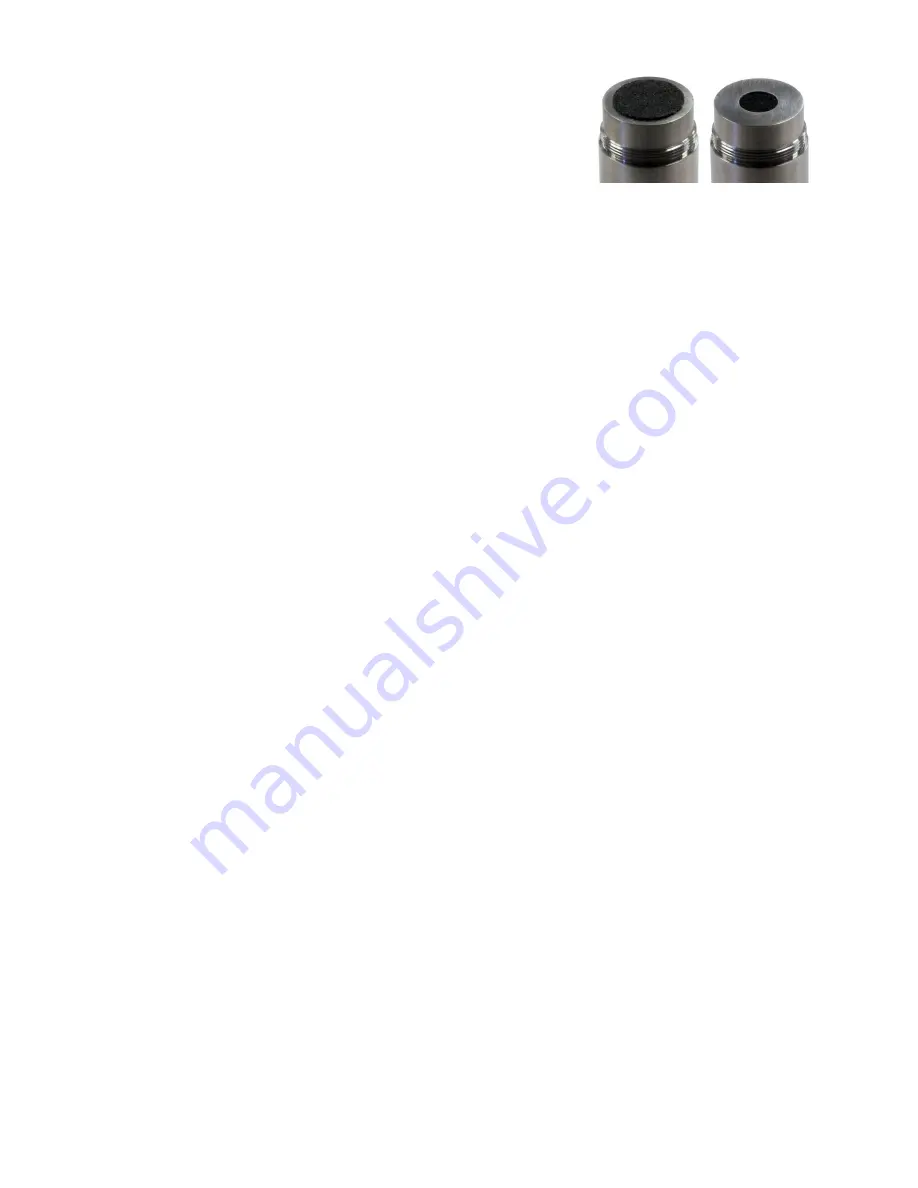
- 4 -
The 130A24 microphone design includes a removable grid cap
and replaceable protective cover. This unique feature allows the
130A24 to withstand harsh environments while extending the
lifespan of the microphones’ critical sensitive components.
Should the water and dust resistant cover get damaged due to
prolonged exposure to harsh conditions, a removable grid cap
allows the user to replace this protective cover quickly and easily
in a few simple steps. First, unthread the grid cap from the housing. Next, peel off the existing
cover from the end of the housing. Sharp edged tools can be used to aid in cover removal, but it
is important to keep the tool at an angle that is parallel to the black covers surface area so that no
contact with the microphone’s delicate diaphragm underneath occurs (Figure 4). To ensure a
proper seal, gently wipe the top of the microphone housing to remove any moisture or debris.
Apply the replacement water-resistant patch to the end of the housing, keeping it centered.
Finally, assemble the grid cap back onto the housing.
5.0 Calibration
All PCB microphones come with a certificate of calibration and compliance with ISO 9001 and
ANSI/NCSL Z540.3. In order to keep the array microphone cost effective, the 130 series
calibrations are not A2LA accredited. For A2LA accredited microphones, please select our 377
and 378 series of acoustic products. PCB microphones are traceable to one or more of the
following National Labs (NIST, PTB or DFM), and calibration records are on file. PCB utilizes
the “Back-to-Back Reference” form of calibration for the 130 series of array microphones. The
microphone is checked against a test and measurement working standard microphone and must
meet specifications before it can be shipped. An example of a calibration certificate is shown on
the following page (Figure 5).
Figure 4





























